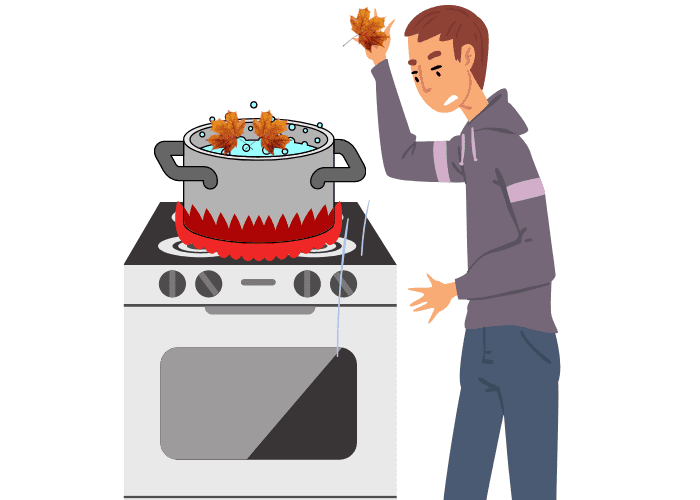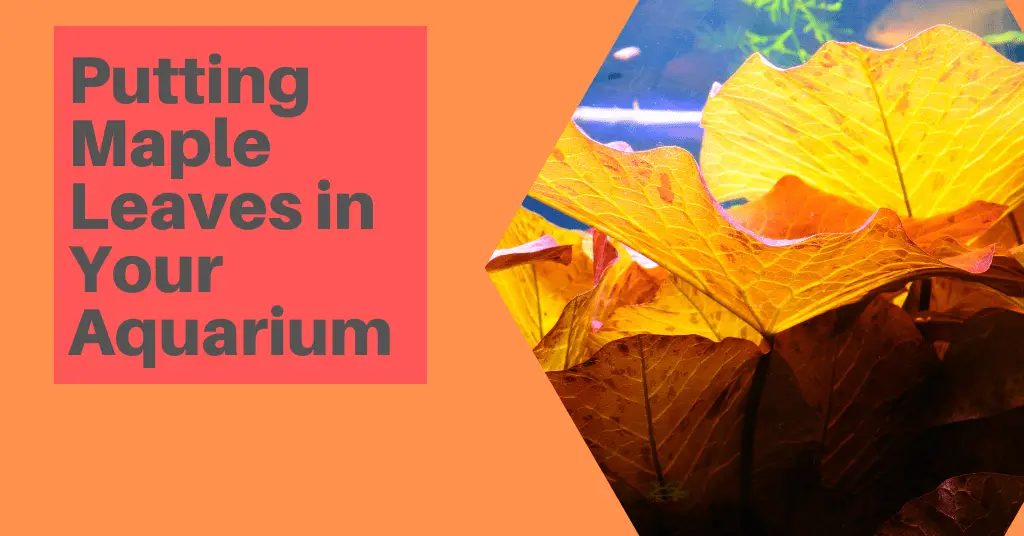Last Updated on July 14, 2021 by cmoarz
Thinking about adding maple leaves to your aquarium? Leaf litter is a great way to spruce up and add color and life into your tank without having to buy expensive plants.
They’re also super beneficial which we will get into in this article.
Dried maple leaves are very similar to dried oak leaves and dried Indian almond leaves in that they will increase the acidity levels ever so slightly in your aquarium water.
That’s something to consider if you have fish that rely on a less acidic habitat. However, if you have water you need to decrease the overall pH to make it more acidic, dried maple leaves will do that for you.
They really do make good leaf litter.
A side effect of this acidification process is the release of tannin and other humic substances.
If you do not know what a humic substance is, it’s not that important.
There are many types of humic substances (HS), but basically, they’re all complex and heterogeneous mixtures that form during the decomposition process.
Tannin is something you will be more concerned about, as it tends to turn the water a muddy brown color.
You will see this often in tanks that have tree branches, driftwood, and heavy leaf littering of oak leaves, Indian almond leaves, etc.
We have an article on how to deal with excessive tannins if they aren’t to your taste.
Collecting and boiling maple leaves
Table of Contents

Most of the time a leaf is most likely going to be fine if you just pick it up, give it a rinse in none chlorinated water, and place it in your tank.
However, if you are concerned about the leaves leaching chemicals, or hitchhiking pests, then you should collect maple leaves and boil them for roughly one minute before allowing them to dry again.
If you have a large number of wide leaves they may require boiling longer than just one minute. You also want to be sure that the water is boiling before you put them in.
If you’re not interested in boiling your maple leaves, just make sure to inspect them for signs of pests prior to introducing them into your tank.
It’s much easier to collect them in autumn right off the tree. These are the “freshest” dead leaves you can find and will often be in perfect condition with very few rips and tears, and almost no insects or mold.
The boiling process will also lessen the tannin product to a certain extent, although you should still expect it as it’s simply a byproduct of the decomposition process.
Remember, if the leaf is still green, it’s not good for this purpose. Green maple leaves in aquarium could cause a severe bacterial bloom due to the high sugar content of green leaves.
Buying maple leaves online

If your super unmotivated to go outside on a beautiful august morning to pick leave, (who can blame you yeesh! *sarcasm*) or more realistically, autumn is probably 6 months away from this post, and you need leaves NOW, then you can always buy them online.
The beauty of buying maple leaves online is not only one of convenience, But precludes the need for inspection and boiling, and sterilizing.
You also have way more options to choose from, like mixed bags of maple leaves, oak leaves, and Indian almond leaves.
You can choose from whole perfect leaves, crumpled up leaves, or just slightly broken with no stems.
In some cases, you may even be able to choose the specific color you want! the choices are really endless. Here a few you can buy that I personally recommend:
Japanese maple leaf:
Last update on 2025-07-11 / Affiliate links / Images from Amazon Product Advertising API
We hope you found this article helpful as it is important to know what types of leaves are best for your aquarium. We also provided a few links at the end where you can buy maple leaves if you find yourself in need and unable to collect them on your own. Thank you again for reading our blog post, we look forward to hearing from you!
About
Owner of AquariumGravel.com and also owner of actual Aquarium Gravel believe it or not! ;). Setting up beautiful aquarium sceneries and habitats since I was very young. Enjoy!
- Web |
- More Posts(290)


